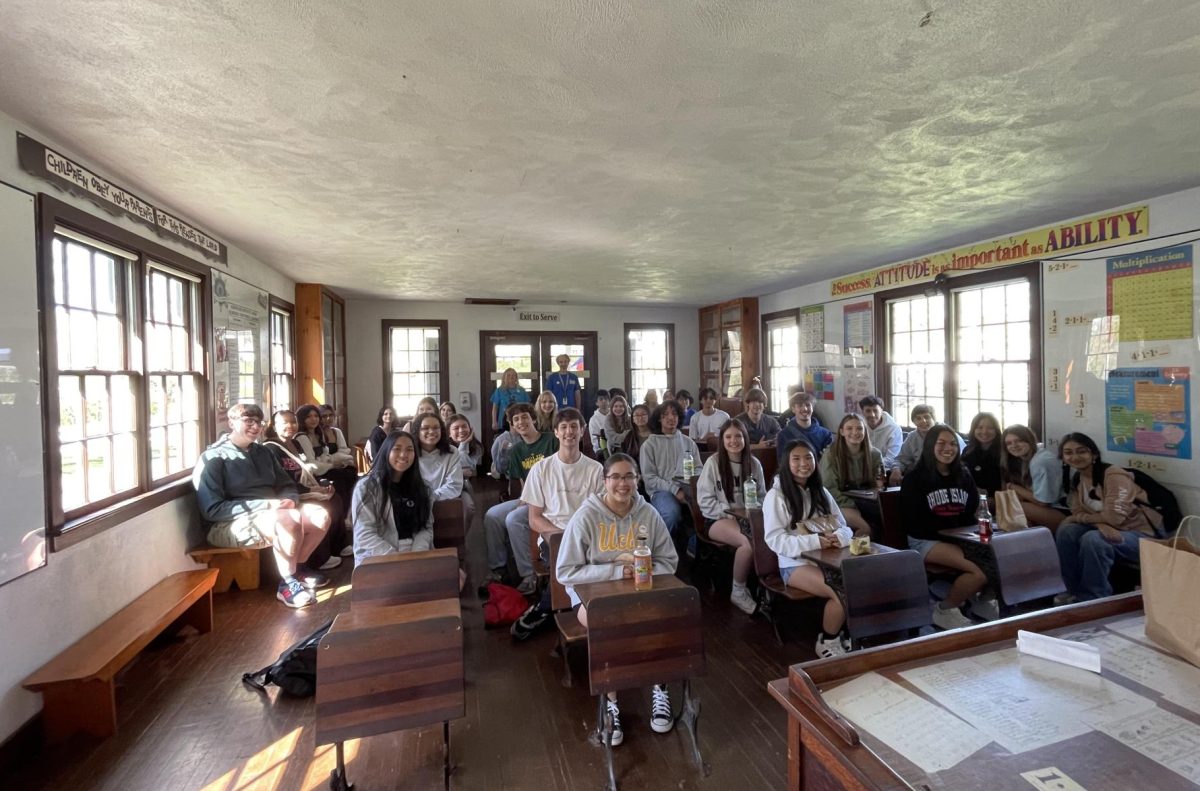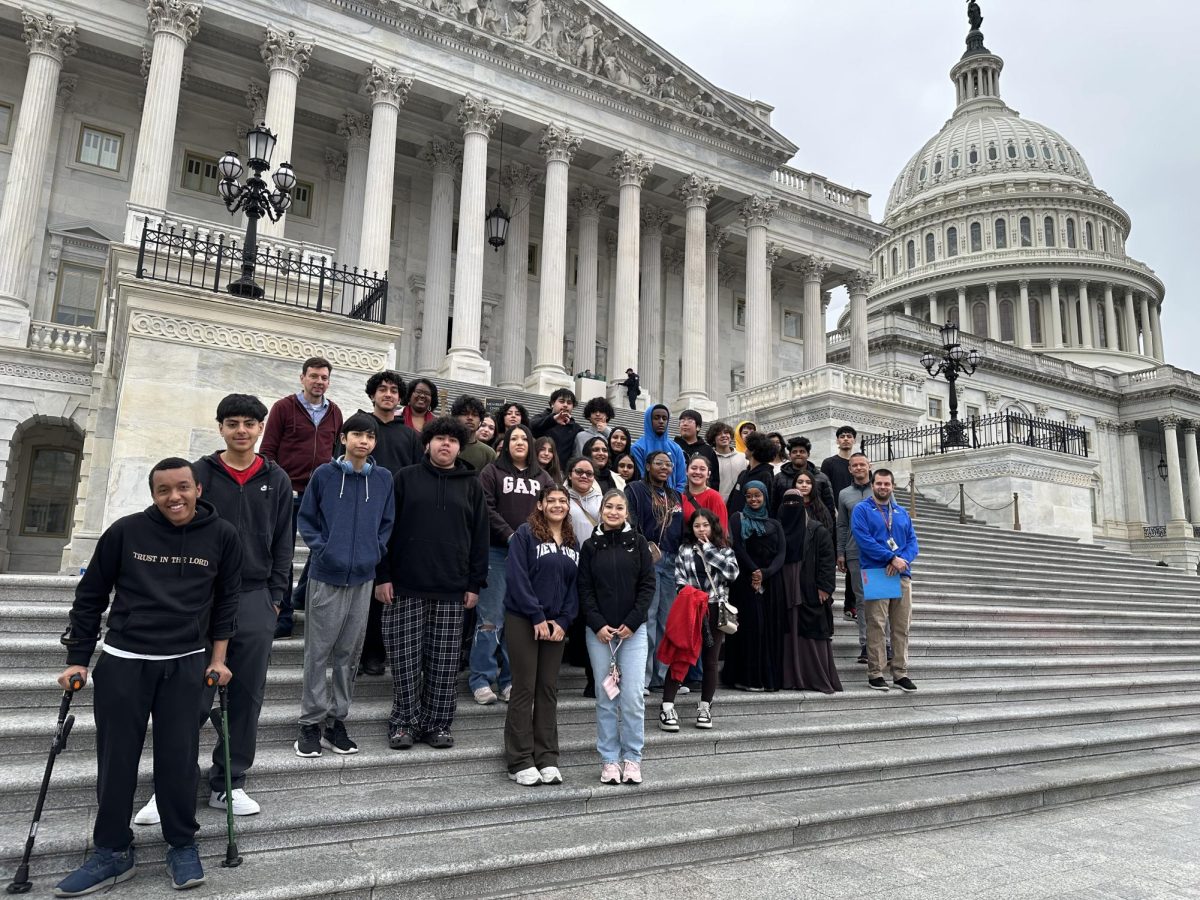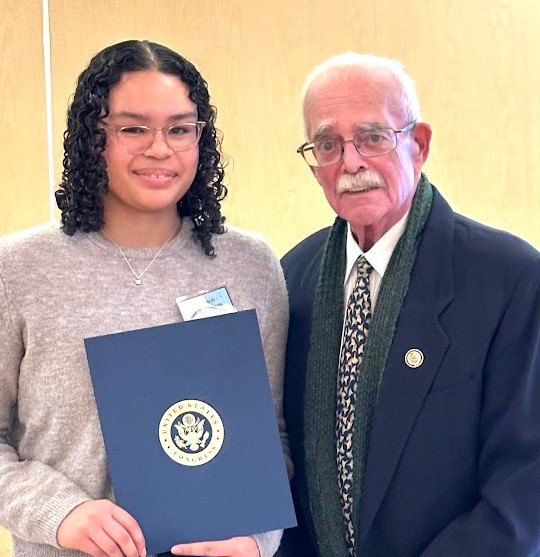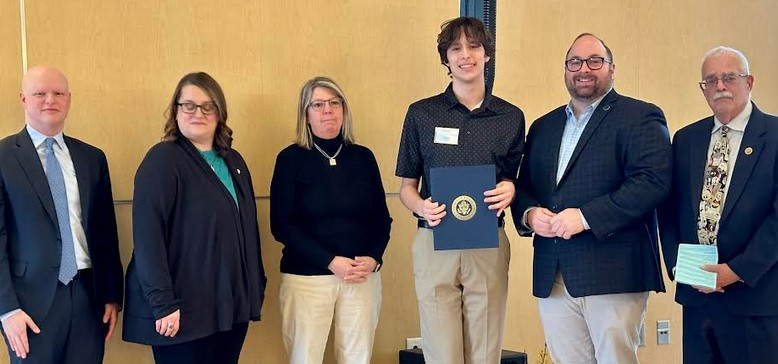On April 17, Lewis’ IB anthropology class went on a field trip to visit the Amish community of Lancaster County, Pennsylvania. This Anthropology field trip ties to the course curriculum and has become a Lewis tradition passed from one teacher to another.
According to the trip coordinator, IB Anthropology teacher Holly Miller, the trip tied to a book the students recently read: The Riddle of Amish Culture by Donald B. Kraybill. After studying the Amish in the classroom, students and staff traveled to Lancaster County, Pennsylvania to learn about a new culture by observing it first-hand.
This field trip is not new to Miller nor is it new to Lewis High School. Miller has been leading this trip for fifteen years. She began taking students on this trip at Annandale High School and continued the tradition when she moved to Lewis High School. Meanwhile, here at Lewis, former Lewis IB Anthropology teacher Steven Hirsch led tours. Other FCPS high schools (including Edison and Robinson Secondary School) participate in this annual tradition.
The Amish is a religious group and part of a strict Mennonite sect that settled in Pennsylvania, Ohio, and other parts of North America in 1720. According to Britannica, Mennonites are a Christian group that belonged to a Protestant church and originated from the Anabaptists, a radical movement for reform during the 16th-century Reformation.
The Amish are known for their simple lifestyle and reluctance to embrace modern-day technology. Most Amish are farmers, so they live in rural regions of the Northeast. Amish people rely on their shops, farming, and garment-making as their primary form of economy because they sell most of the things they make to make a living.
When Lewis IB Anthropology students arrived in Lancaster County, they first stopped at an Amish village. Because the Amish like to remain separate, they don’t like outsiders (known as “the English”) intervening in their lives and culture. Near the houses, there were shops and a little barn where the students got food to feed and pet the animals.
Following the first stop, they took a tour of the Amish village, spending time just driving around and watching the Amish in action in the fields. “You could see the women in their gardens, horses, and buggies, just [going about] important things about their daily lives,” Miller said.
Miller described how Lewis students and staff stopped at an Amish farm, where they got to interact with Amish people. “So the kids got to see their houses. And then there was also a little barn there with animals that they got to pet,” Miller said.
Juniors Mason Eaton, Ariam Tefari, and Ian Hurst, three IB anthropology students on this trip, all enjoyed getting the chance to interact with farm animals.
Eaton especially enjoyed feeding the goats on the farm. “I named my goat Lebron James because Lebron James is the best basketball player to have ever lived. I fed Lebron, and his friends got greedy and tried to steal food from me,” Eaton said.
Tefari enjoyed seeing the variety of animals that the Amish kept on their farms. “This was my favorite part because I don’t see farm animals often, but seeing them on this trip made me happy,” Tefari said.
The students and staff also toured a schoolhouse where first through eighth grade students all learn and study together in one room.
Their final stop was an outdoor “mall.” It had stores selling canned vegetables, jams, pickles, and other foods canned by Amish women as well as tourist shops selling Amish country souvenirs.
Hurst mentioned that his favorite part was seeing the animals and trying their homemade food.
Miller was happy to buy Amish-made food, but she also enjoyed watching the students interact with the animals.
“I think that [this] was the part that everyone likes most, just because it’s foreign to us–seeing horses, llamas, and ponies, and feeding the goats and chickens,” Miller said.
Though Eaton learned in his IB Anthropology class about the way the Amish dressed, lived, and even the animals they owned, he was struck by just how much Amish life differs significantly from our own modern life through the field trip. He went on to say that they don’t use any electricity and that he could never live without his phone, computer, or other things that run on electricity. Yet he also concluded that the Amish don’t struggle without using electricity because they have never experienced it.
Tefari learned something new about the peacocks and how they are used to alert the Amish farmers if anything goes wrong on the property.
Hurst felt well-informed about Amish before his class trip to Lancaster County. “However, seeing the little Amish kids dressed in suspenders and bonnets was a surprise,” Hurst said.
The students saw the connection between what they observed on their Lancaster County field trip and what they were learning in Anthropology at Lewis.
“This field trip reinforced everything I learned in anthropology. I understood and connected what we learned in class to everything we had seen on the field trip,” Tefari said.
Similarly, Hurst and Eaton also said that everything on the field trip showed and translated into what they learned in anthropology.
The field trip to Lancaster County offered IB Anthropology students a better understanding of the Amish culture. Students connected classroom learning to real-world experiences by visiting Amish farms, interacting with the Amish, and observing their way of life. As part of a long-standing Lewis tradition, this field trip expanded students’ understanding of different cultures and highlighted the difference between Amish culture and modern society.







